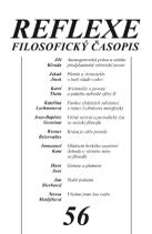Poznámka 73
ϑυμός se ve zlomku B 85 nejčastěji překládá jako „touha“ (např. W. K. C. Guthrie, A History of Philosophy, I: The Earlier Presocratics and the Pythagoreans; J. Burnet, Early Greek Philosophy, London 1892; K. Reinhardt, Parmenides und die Geschichte der Griechischen Philosophie, Bonn 1916; P. Wheelwright, Heraclitus, Princeton – New Jersey 1959; H. Fränkel, Dichtung und Philosophie des Frühen Griechentums, New York 1951; K. Deichgräber, Rhytmische Elemente im Logos des Heraklit, Akad. d. Wiss. u. Lit. in Mainz, Abhandl. der Geistes- u. sozialwissenschaftlichen Klasse, 9, 1962, str. 479–553; J. Špaňár, Die Seelenlehre des Herakleitos von Ephesos, in: Sborník prací Filosofické fakulty Brněnské university, 18, 1969, str. 45–56; R. A. Prier, Archaic Logic: Symbol and Structure in Heraclitus, Parmenides and Empedocles, Hague 1976), „hněv“ (např. G. S. Kirk, J. E. Raven, a M. Schofield, The Presocratic Philosophers. A Critical History with a Selection of Texts; W. J. Verdenius, A Psychological Statement of Heraclitus, str. 115–21) nebo obecně jakákoli citová hnutí, „vášně“, „passions“ (např. R. B. English, Heraclitus and the Soul, in: Transactions of the American Philosophical Society (Philadelphia), 44, 1913, str. 163–184; H. Lloyd-Jones, The Justice of Zeus, Berkeley 1971).
Zpětné odkazy: Reflexe 23:Prolínání perspektiv v Hérakleitově nauce o duši
